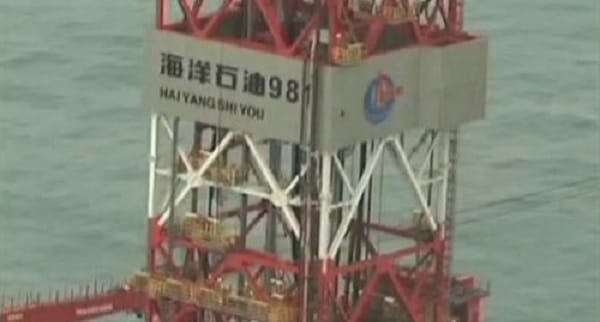China has towed away its oil rig from disputed waters in the South China Sea ahead of schedule, insisting the rig simply completed work earlier than expected. Chinese officials claim an incoming typhoon prompted the departure, while Vietnam has moved its coast guard and patrol vessels from the area. But what is the real reason China moved the rig, and what does this mean for tensions in the South China Sea?
Vietnam insists its “strong reactions” to Chinese claims forced China to back down. One military official called the typhoon “just an excuse”, while another declared that China has effectively withdrawn their maritime claims, after Vietnam “made [China] aware of their wrongful violation of Vietnamese sovereignty”.
Some Chinese citizens have also interpreted the withdrawal of the rig as China backing down – critics have lashed out online, accusing their government of conceding to pressure from the United States. Officially, the US has refused to speculate on the reasons for China’s decision. But just days before the withdrawal, the US had rebuked China’s actions over its maritime claims at the annual US-China Strategic and Economic Dialogue in Beijing. Additionally, US President Barack Obama called Chinese President Xi Jinping to discuss US-China relations on 14 July, the day before China moved the rig.
What to expect next
Beyond the official explanation, analysts have offered two interpretations for the rig’s withdrawal. First, China could be attempting to save face. Beijing’s maritime aggression in the South China Sea has catalysed the Philippines, Japan, and Australia to strengthen defence ties with the US, eroding China’s influence in the region. China was also embarrassed at the Shangri-La Dialogue in Singapore, in May, where the US and Japan both denounced China’s recent actions in contested waters. China’s withdrawal of the rig may be a tactical move, an attempt to reduce international focus on the South China Sea issue.
Alternatively, the incident could be considered a precedent of China placing naval assets where it pleases, regardless of external pressures. While diplomatic bluster has occurred, China still achieved its goal: energy exploration. Anti-Chinese riots in Vietnam, which targeted Chinese factories, did not provoke any strong reaction from Beijing, contrary to China’s swift nationalistic diplomacy after territorial disputes with Japan. China has consistently opposed outside meddling in their perceived bilateral affairs and has categorically denied that the rig’s removal was a response to external factors. As such, China maintains their right to return to the disputed waters for more oil exploration, leaving the door open for future conflict to arise in the area.
Sources:
4 reasons China removed oil rig HYSY 981 sooner than planned [The Diplomat, 22 July 2014]
Vietnamese pop champagne as Chinese oil rig leaves [BBC, 17 July 2014]
Mission accomplished? [Foreign Policy, 16 July 2014]
Chinese oil rig near Vietnam to be moved [New York Times, 15 July 2014]
Photo Credit: Voice of America




